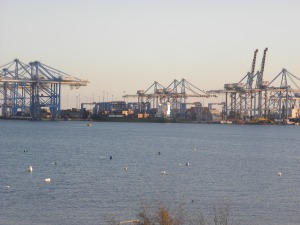The publication by Transport Malta, last week, of a pre-qualification questionnaire relative to the “award of a concession contract for the design, build, finance, operate, maintain and transfer of a marina” at Marsaskala requires further explanation. What has been going on behind the scenes? Specifically, on whose initiative has the ball been set rolling? Is this part of the ongoing development spree, intended to bolster existing or planned development elsewhere in Marsaskala?
At some point the truth will come out. It would be hence much better if Transport Malta, and whosoever may be pulling the strings, to put all the cards on the table now.
The proposed Marsaskala yacht marina is tainted, even at this stage, with the general local plan defects: a lack of adequate environmental assessment. The assessment of the cumulative impacts of the various local plan proposals has never been carried out. These impacts add up and seen together they should have been cause for concern, even at the drawing board stage. Unfortunately, nothing was done at that stage to mitigate the anticipated cumulative impacts of the local plan proposals.
Those of us who have been subjecting land use planning to a continuous scrutiny, have, since way back in 2006, emphasised that the local plans were then not subjected to the emerging Strategic Environment Assessment procedures. In fact, the local plans, those still pending approval, after having been retained in draft form for some time, were rushed through all the approval stages during the summer months of 2006 specifically to avoid being subjected to the provisions of the Strategic Environment Assessment Directive of the EU which entered into force during August of 2006 or thereabouts!
The specific impacts of the proposed yacht marina will undoubtedly be eventually analysed by an Environmental Impact Assessment (EIA) which will be triggered if a planning application for the yacht marina is eventually submitted. Legislation in force provides ample room for involvement of all, when this commences, starting off from the basic EIA terms of reference right up to the consideration of the detailed studies, and more. We have been through that many times in respect of various development proposals.
However, the cumulative impacts on the Marsaskala community, both residential and commercial, will not be carried out as that was avoided at the outset when the local plan for Marsaskala (part of the Local Plan for the South) was approved. This is the basic underlying worry expressed in not so many words by all those who have stood up to object to the sudden unexplained intrusion of Transport Malta into Marsaskala affairs. Kudos to John Baptist Camilleri, Marsaskala local councillor, for prodding the Marsaskala Local Council to stand up and be counted. The Marsaskala local council ought to have been consulted even in terms of the Local Council Act which makes it incumbent on central government and its agencies to consult with local councils whenever any initiative having local impacts is being considered.
Transport Malta is acting as an agent of central government. Government, led by the Labour Party, has conveniently distanced itself from the political responsibilities which result from the local plans , coupled with the rationalisation exercise, which have been shouldered by its predecessor in government, the Nationalist Party. It has been very convenient for Labour to politically lump all the local plan fallout on the PN. However, sixteen years down the line, it is pretty evident that the Labour Party, in government for over eight years, has been very reluctant to handle the long overdue revision of the local plans and factoring in considerations resulting from a study of the cumulative impacts abovementioned. This is not only applicable to the local plan relative to Marsaskala, but to all local plans! It has obviously been too hot to handle.
Minister Aaron Farrugia, politically responsible for both land use planning and the environment, has been reported in the media, in the past few days, as stating that the local plan revision will start immediately after the general election, expected shortly. He has stated that the process will take around three years. His predecessor as Minister responsible for land use planning, Ian Borg, had made some statements in the distant past about this, indicating the then parameters for a revision of the local plans. But nothing has materialised yet except his extreme reluctance to act!
I would, at this stage, remind the Hon Minister of the proposals from the Maltese Greens on the need to reverse the rationalisation exercise as well as on the urgent need to implement a moratorium on large scale development throughout the islands. These proposals have been part of our electoral manifesto repeatedly since 2006. Over-development and the building industry have to be brought under control the soonest.
The proposed yacht marina at Marsaskala is just the latest example of this mismanagement.
published on The Malta Independent on Sunday: 22 August 2021


